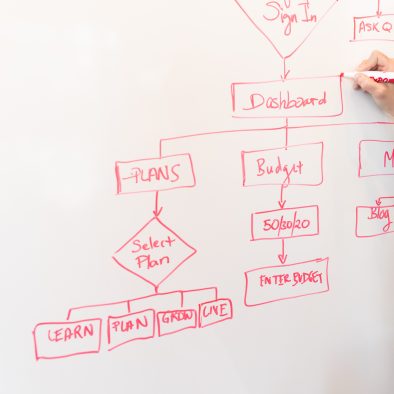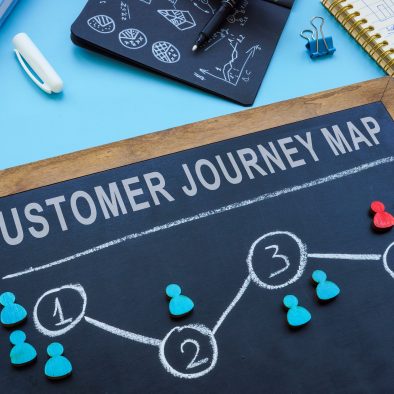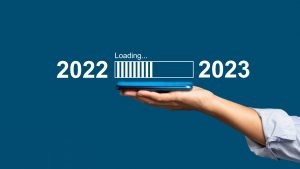Churn is a company-wide problem. You cannot overlook it or just let customer success take the blame for it. It is also inevitable but analyzing it will help you gauge your processes and understand the choke points in your customer journey. Churn is like a hole in a small dingy boat, it leaks in the water and however much water you throw out of the boat, the only solution is to fill the hole. What we will help you in this Reptrics Churn Guide is to help identify those holes and learn how to minimize them.
Customer Churn Rate
Churn is quite expensive for the company. To make up for it, a higher rate of customer onboarding is required. But finding new prospects and converting them typically costs more money than retaining the current customers. Data suggests that it takes 5x more money to acquire new customers than to keep the current ones. A high churn rate could spell some real concerns for your B2B SaaS business.
There are several reasons why you should monitor the churn rate in your company:
- Understand where you are going wrong; product side, implementation, or product market fit.
- Selling to current customers is more straightforward than converting new prospects;
- Customer lifetime value (LTV) is calculated using churn rate;
- Demonstrates Retention Rate
- It assists in determining the ideal client personas.
Churn Analysis
The goal of SaaS churn analysis is to determine how to lower a company’s customer loss rate. Churn, also known as customer attrition rate, can be reduced by analyzing your product and how users interact. Customer churn analysis is a term used by some customer success specialists.
So, it’s time for us to establish a procedure to evaluate our own churn. Or, worse yet, we will only ever learn based on assumptions and incomplete facts. We need a procedure to help us open our minds to learning, and that process must be done correctly and thoroughly.
Early Warning Signs of Customer Attrition
You can employ a variety of KPIs to comprehend the key signs of churn, including
- An increase in missed payments and a decrease in the amount of time spent on the product
- More plans are being downgraded
- Changes in the account’s decision-makers could result in reprioritization and churn.
The 4W Churn Analysis Framework
Who?
- The segment of customers that are churning
Why?
- Voluntary or Involuntary Churn
When?
- Early Stage or Late Stage Churn
Where?
- Specific Geographies
Who: Examine Customers Segment Churn
Customer segmentation is the practice of classifying your consumers based on a variety of shared characteristics. You can use it to find out about client attrition trends. Customer segmentation can be used for churn analysis in the following ways:
1. Revenue Churn Analysis
Based on their revenue, clients are divided into groups in this sort of segmentation. Consider segmenting your clientele into start-up, mid-market, and enterprise groups. You can determine whether a certain revenue range is churning more or less by analyzing churn by revenue segment and developing targeted initiatives to reduce such churn. For instance, early-stage startups may be leaving due to financial difficulties; this can be stopped by providing discounts and flexible payment terms.
2. Analysis of Industry Churn
Since every business has its own unique set of issues, this kind of client segmentation might provide churn statistics based on certain industries. Putting into place unique procedures for each industry helps in identifying your ideal customers as well.
Why?
Analyzing the causes of client churn is necessary. Even though we covered the most frequent causes above, you can classify them as voluntary or involuntary churn. Investigating what percentage of churn was in each category provides valuable information for developing routines and tactics for preventing churn.
When: Churn at Early vs Late Sages
Your churn study gains depth when the timing of the churn is examined. There are several angles from which to view this. Start by looking at churn data according to activation dates. It reveals whether or not the buyer abandoned the product soon after activation.
Where: Geographic Churn Analysis
Knowing where your customer is located helps put their churning in perspective. The adoption of your product is impacted by the fact that each country has various tax laws, payment gateways, and payment processes. It is essential for subscription businesses to adhere to local sales tax regulations. This research is an excellent approach to identifying trends that may indicate that your members are leaving because there aren’t enough payment options available to them or they aren’t following the rules.
And there you have it—the 4W Churn Analysis Framework.
Explaining Churn Classification
Customers typically depart for one of two reasons: either something bad happened to them, or they didn’t get the desired result. But we need to add another level to our understanding of churn in order to truly get what’s happening and either operationalize from the beginning or optimize our existing systems.
The Churn Classification method comes into play here. Before you continue, you must ascertain the precise cause of client churn; nonetheless, all of these factors will fall into one of two categories: Avoidable or Unavoidable.
Okay, then let’s define…
Avoidable Churn Avoidable signifies that the client had the potential for success (was a good fit) and that they are still in operation, paying other providers. You should not have lost them.
When Churn is unavoidable. Unavoidable denotes that the client lacked potential for success or possessed it but abandoned their venture. A reasonable rule of thumb is that churn was undoubtedly avoidable if the customer is still in operation, paying other providers, and was a Good Fit (with Success Potential). This knowledge ought to make many of the erroneous, “inevitable,” statements that individuals like making obsolete.
Expected Churn Expected merely denotes that your signaling is accurate. You anticipated it. Setting up good health scoring prepares you well for the worst. Make it clear that just because something is “anticipated” doesn’t mean you tried to prevent customer churn or win them back. It only indicates that you anticipated it. However, if you’ve reached the stage where you can predict churn before it occurs, you’re already far ahead of – the vast majority of businesses that are still astonished (shocked!) by every churn.
Unanticipated Churn Unexpected is precisely that… No, you didn’t see it coming at all. That is a big problem. Software like Reptrics allows you to gain that customer visibility and cut down unexpected churn. ‘Churn is our Common Enemy. We understand that this sounds like a lot of work. But we are here to help.
We at Reptrics have helped many SaaS orgs understand their churn and calculate it for them. Our Customer Success Platform provides you with exceptional insights into your company churn in just a few clicks. Who doesn’t want that power in their hands?
More than that it is still easy to talk about churn but having the ability to reduce it is where the real money comes in.
You can learn more about our platform from our website: www.reptrics.com









